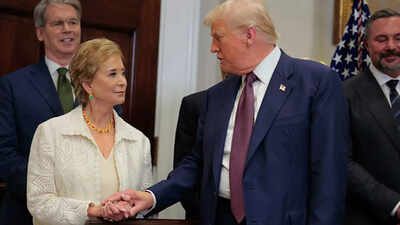5 ways the Department of Education is upending public schools: Here’s why it matters to every family

Five ways the Department of Education is upending public schools: here’s why it matters to every familyThe Department of Education under the Trump administration has implemented a series of rapid changes that could reshape public schooling across the US. Over just eight months, political appointments and policy shifts have signalled a major shift in how schools operate and how children are educated. This transformation has sparked concern among educators and families who value public education as a community cornerstone.With a strong focus on expanding private and religious education options, the department is pursuing policies that challenge the traditional public school system. According to an investigation by ProPublica, many of these changes are already affecting public schools, which the administration often criticises as failing or ideologically misguided. Here are five key ways the Education Department is upending public schools — and why it matters to every family.Encouraging an exodus from public schoolsEducation Secretary Linda McMahon and President Trump have pushed for broader school choice options, including tax-funded vouchers to help families leave public schools. A new federal tax credit programme will begin on January 1, 2027, allowing more parents to send children to private or religious schools. The department has also urged school districts to use some federal funds, originally aimed at disadvantaged students, to pay private providers for services.Public school leaders warn that this trend is draining vital per-pupil funding. “Millions of young Americans are trapped in failing schools, subjected to radical anti-American ideology,” McMahon said shortly after taking office, as reported by ProPublica. Lindsey Burke, an adviser with ties to The Heritage Foundation, co-authored the education chapter of Project 2025 and has expressed hope that government-run schools will one day be a thing of the past.Cutting federal funding for essential programmesThe department has reduced hundreds of millions of dollars in grants for mental health professionals, teacher training, and other support services. Its 2026 budget proposal suggests merging 18 existing grant programmes into a single block grant of $2 billion to be distributed to states. This is approximately $4.5 billion less than if the grants remained separate. Overall, the Trump administration plans to cut federal education spending by 15% for the 2026 fiscal year.Injecting conservative Christian values into schoolsThe department has taken a strong stance against what it describes as liberal indoctrination, promoting policies aligned with conservative Christian values. It opposes protections for transgender students and restricts certain materials on sexuality. The Education Department has adopted Trump’s executive order affirming there are “two sexes, male and female,” and announced plans to protect the right to prayer in public schools, as reported by ProPublica. Meg Kilgannon, a vocal advocate for Christian leadership in education, has become a senior adviser in the department.Promoting patriotic curriculum choicesWhile the department maintains that curriculum decisions belong to local communities, it has emphasised patriotic education and civics lessons that portray American history in an “inspiring” way. The administration advises states to avoid materials that might induce “intrinsic guilt” in white students over past injustices. Parents have been supported in pulling children out of classes they find objectionable, including those involving LGBTQ+ themes.Weakening civil rights protections for students of colourThe department’s Office for Civil Rights has challenged programmes designed to assist Black and Hispanic students, investigating school districts for lessons on systemic racism and student empowerment events. It claims such efforts discriminate against white students. The office has also targeted districts for policies allowing transgender girls to participate in girls’ sports and use related facilities, threatening sanctions including loss of federal funding and DOJ involvement.These changes by the Department of Education represent a significant shift in the US public education landscape. Families across the country may feel the effects as schools adjust to new policies, funding structures, and cultural directives.




